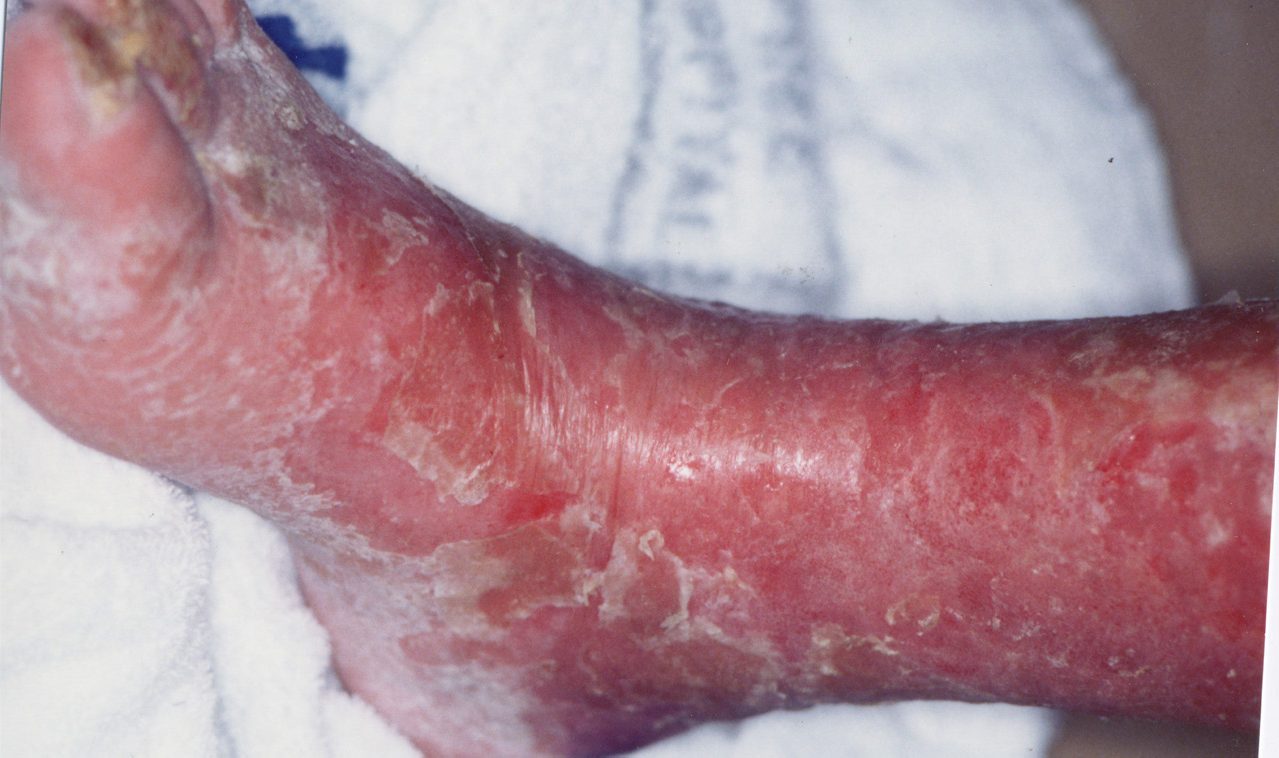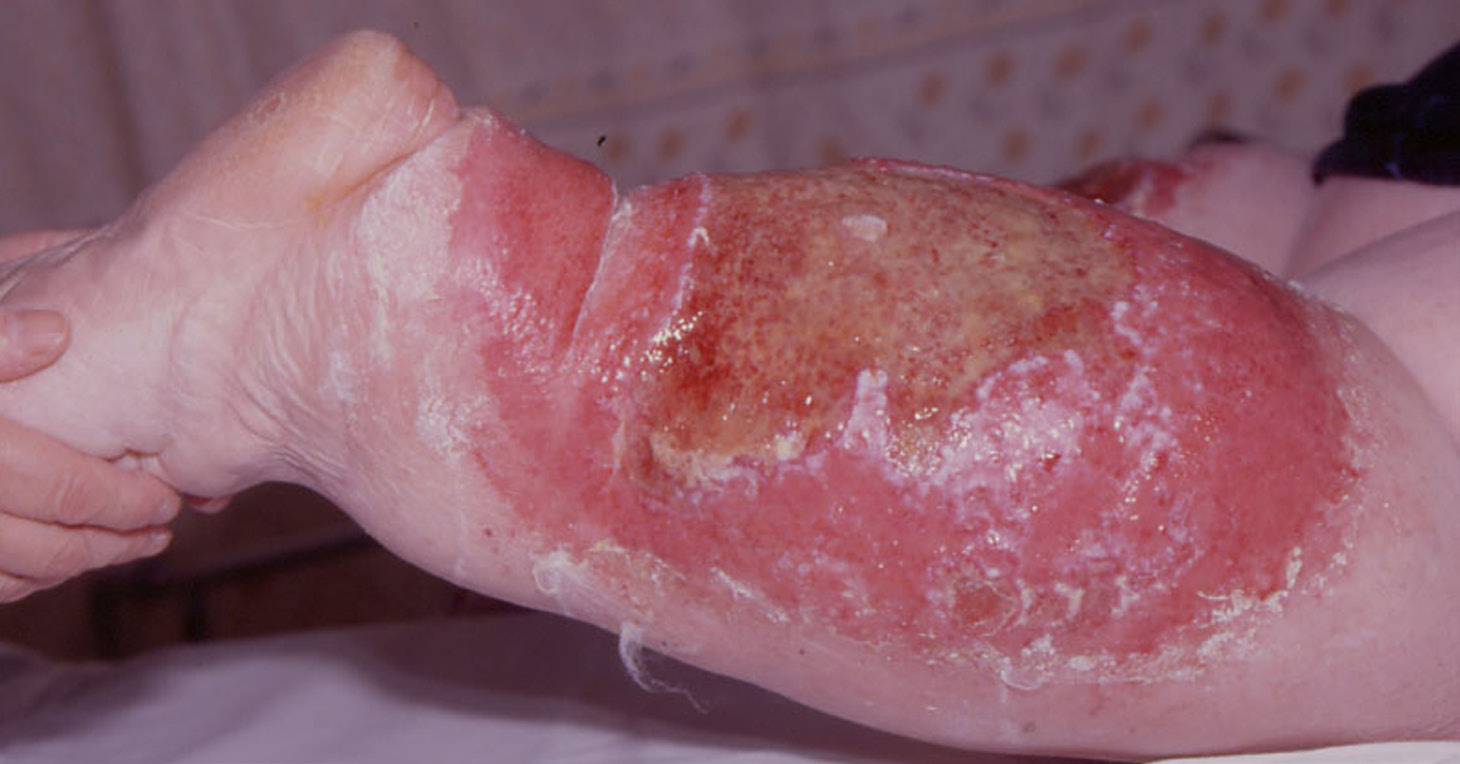Topic Three: Surrounding Skin
Skin surrounding a wound is particularly vulnerable, and although it may appear healthy, periwound problems frequently occur (Lawton, 2009).
The periwound skin area has been defined as the area of skin extending to 4cm beyond the wound edge but may include any skin under the dressing or even further in some cases (Dowsett et al., 2015).
Periwound skin damage can result in protracted healing times and may lead to pain and discomfort for the patient, impacting their quality of life. The most common problems seen in clinical practice are associated with exudate. The term ‘periwound moisture associated skin damage’ is used to describe erythema and inflammation of the skin within 4cm of the wound edge (Dowsett & Allen, 2013).
When the periwound is exposed to exudate, the stratum corneum absorbs the fluid and swells. The increased moisture saturates the lower layers of the epidermis and increases the risk of maceration. This reduction in skin barrier function results in increased transepidermal water loss, leading to skin dryness due to decreased surface lipids. The patient is at increased risk of contact dermatitis (WUWHS, 2016).
Over hydrated skin can be slow to heal and has increased risk of infection, friction and skin damage, all of which can lead to wound enlargement. Exudate impacts the pH of the skin. When poorly managed, the change in acid mantle alters the bacterial balance/flora of the skin, reducing the balance needed for optimal healing (WUWHS, 2016).
Factors that increase the risk of periwound skin damage include:
- The amount of exudate and presence of heparin binding proteins
- Bacteria and associated toxins
- Histamine produced specific bacteria
- Proteolytic enzymes, such as matrix metalloproteinases (MMP’s)
- Inflammatory cytokines in the wound exudate
(Gray and Weir, 2007).
It is important to look at the surrounding skin of the wound, as this will provide useful information. The wound margin can help an experienced practitioner to determine the aetiology and healing status of a wound.

Erythema
As stated before, erythema, an increased heat of the skin surrounding a wound, is indicative of wound infection. Inspection of the surrounding skin may also reveal that the patient is allergic to a wound care product. This is known as contact dermatitis.
The status of the periwound skin will assist in determining which wound care products are suitable. For example, fragile skin will not tolerate adhesive products and could indicate the use of a silicone adhesive. The periwound skin can also provide useful information about whether the wound care product being used is effectively managing the exudate. If there is inadequate exudate control, maceration of the surrounding skin can occur.

Macerated skin
If this situation persists over time, irritant dermatitis may develop. The skin may also be scaly and dry, with a build-up of layers of dead tissue. These need to be removed, and the surrounding skin hydrated with an emulsifying cream or ointment.